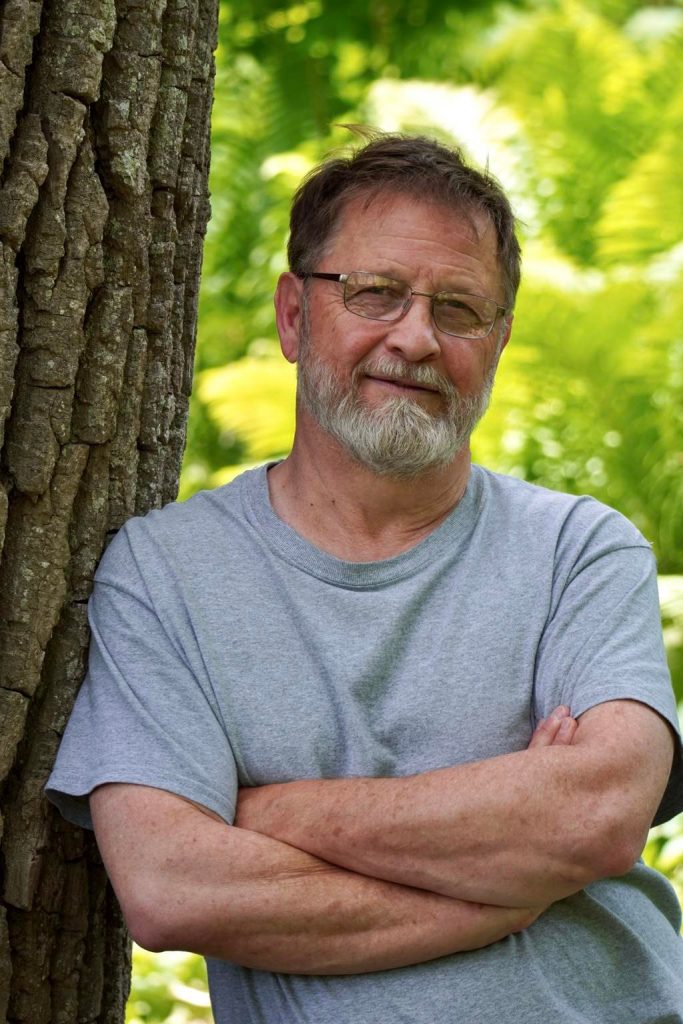Aug 28 2008
Gap in the Old Stone Wall
Is the environment currently undergoing revolutionary or evolutionary change? I sat down this morning to answer this rather provocative question but drew a blank. So I did what I usually do when thoughts and words don’t come easy to me. I stepped away from my desk and went for a walk.
A few miles outside town, I parked my car at an overgrown turnout and tramped into a stretch of woods I’d visited before. I followed a logging road until it turned sharply eastward, then bushwhacked north from there. That’s when I realized I had forgotten my compass. I continued bushwhacking north, anyway.
The occasional glimpse of a beaver pond on my right kept me oriented, but I was a little concerned about missing the trail that would eventually lead back to the logging road. I was navigating by memory and that’s always a dicey proposition. Just then I remembered a gap in the old stone wall running east-west through these woods. I could pick up the trail there. Finding that gap would be tricky, though. I didn’t know this area that well.
A few vaguely familiar landmarks cropped up along the way: a half-dead maple tree, a soggy crease in the earth, a huge boulder. None of these things had been on my mind when I stepped into the woods, yet somehow I recognized them. Together they led me to the gap in the old stone wall and then to the trail. Amazing. I couldn’t have done better with a map.
That is how evolution works, I think. Wild nature winds through the material world and, by virtue of trial and error, eventually gets to where it needs to be. Nature itself has memory, reaching beyond the memories of the countless individual plants and animals in it.
When great change occurs, it occurs suddenly, so we are tempted to think it is the result of some obvious set of circumstances rooted in the present. But we aren’t seeing the big picture. That is why humankind has a hard time grasping the causal relationship between, say, the burning of fossil fuels over the past two centuries and global warming. We expect things to develop in a time frame that we can readily comprehend – one corresponding to our lifespans. Yet sometimes it takes many, many years for things to reach fruition. What we perceive as a revolution in nature, a dramatic event, is but a snapshot in a long, drawn out evolutionary process.
The great changes we are seeing in the world around us these days were set in motion generations ago. Consequently, it’ll take a while to set them right. And to do so may require a significant change in our own way of thinking and doing things.
I picked up a game trail on the other side of the old stone wall and tagged the logging road shortly thereafter. The rest of the outing was an easy walk back to the car. Funny how some part of me knew the way through these woods even though I had no conscious memory of it. Still, I’ll make sure to carry a compass the next time I go for a hike.
2 responses so far
2 Responses to “Gap in the Old Stone Wall”


Glad to see your internal compass was working well! Nature imprints itself into those who frequent it and pay attention.
This past weekend, I took part in a shorebird banding and statistics gathering in a marsh along the Sandusky Bay. This process has been ongoing for 25 years and 2 of the original banders are in their late 60’s, but are hoping to do this for another 25 years. They can prove change in nature by their data to those who have not paid attention. Hopefully, this “compass” will back up anecdotal memories and will help others to demand change in thinking and actions.
Sunday’s project was collecting strange algae from dead spots in Lake Erie and boat harbors. Any day on the Lake is a good day, but this was very unsettling. Wish you’d been there to observe!!
Keep up the good fight, Deb.